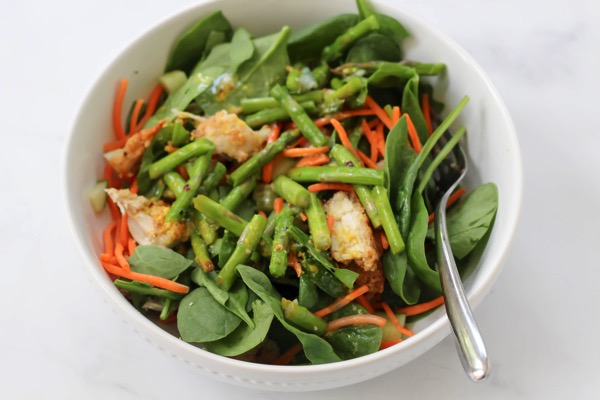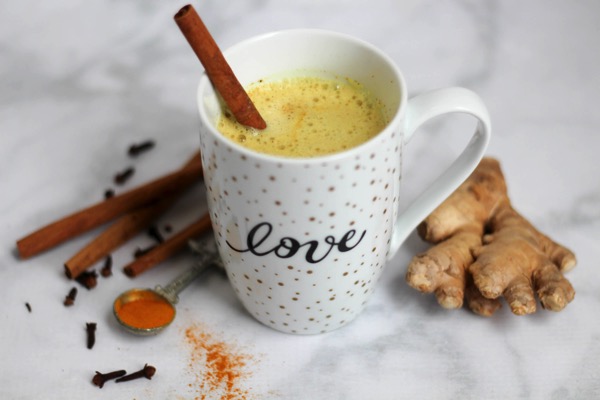Ayurvedic nutrition: how it differs from what you know, and how it will change your life
When I first learned about Ayurveda and the history behind the sister science of yoga, I was instantly fascinated. I knew my Doshas almost immediately upon reading the descriptions (I’m a Vata-Pitta), and desired to learn as much as I could about Doshas and how I could use these strategies to create balance in my life. I’m a huge believer that food and lifestyle can be our greatest medicine, and enjoy consulting experts for tips and techniques that I can implement in my life.
When P was born, I reached out to a good friend of mine, Kristen, about writing a post about Ayurveda. You can check out the full post on Grounding Vata here, and the response was amazing. I asked Kristen if she’d mind writing another post focused on Ayurvedic nutrition, and thankfully, she said she’d do it! Kristen and I used to work together at lululemon in Orlando. She’s a brilliant yoga instructor (who has practiced for many years and has studied in India) and one of the sweetest, kindest people you will ever meet. Her skin is beautiful -I almost creepily touched her face and asked what moisturizer she uses- and she radiates with that yoga glow that makes you want to practice a little more often. 🙂 She’s the founder of Wellblends and the author of Your Life is Medicine: Ayurveda for Yogis. I’m so excited to share her post with you, and hope you enjoy it as much as I do!
We are well acquainted with nutritional terms such as calories, proteins, carbs, fats, vitamins, and minerals- yes? Who of us has not tried a low carb diet, fat-free diet, high-protein diet or the like? How’d that pan out for you? Did you stay with it? Did adopting one of these diets become a sustainable way of eating for you? Did it seamlessly mesh into your existing lifestyle?
If your answer is “Great, I experienced all the lasting benefits I was looking for!” and “Yes, I have stuck with my low-carb/ high-protein diet for decades now.” — You’re the exception. Western nutrition is most familiar to us. We’re trained to look at labels to check for caloric and fat content. If we’re extra savvy we might even scan the label for sugar and fiber content. But allow me to introduce you to a whole new way of thinking about nutrition.
Ayurveda examines nutrition from the standpoint of qualities, tastes, and potency effects.
Allow me to explain:
Every food item you eat is composed of various qualities, tastes and potencies (or temperature effects). For example: Dates are heavy, sticky, soft, sweet, and slightly warming. Kale is light, rough, bitter, and cooling. Cheese is heavy, dully, cloudy, slow, sweet and heating. Beans are light, dry, astringent, and neither too heating or cooling- call them neutral. Watermelon is light, moist, sweet, and cooling. Are you getting the gist?
According to Ayurveda we want to eat foods that have the qualities, tastes, and temperatures that balance our mind-body constitution. For the sake of simplicity, there are three basic constitutions- we call them Doshas.
Vata types tend to be light, dry, cold, rough, and quick. Physically these people tend to be on the thinner/small boned side. They may have dry and rough skin, hair, and nails. They love activity. They have active bodies, minds, and imaginations. Vata types tend to be creative, intuitive, and easily excitable. Vatas tend to have irregular appetites and digestion. They may be very hungry some days and completely forget to eat other days. Vats are prone to experience gas, bloating, constipation, crucially joints, forgetfulness, anxiety, and insomnia.
If this is you- forget counting carbs, proteins, fats, and the like. Ayurveda would encourage you to eat foods that help you achieve balance. You should favor foods that are warm, moist, heavy, and oily. This may include stews, oatmeal, dates, sweet potatoes, and hot chocolate to get the ball rolling. As a Vata you are already supercharged with light, dry, cold, and rough qualities. It is advisable for you to avoid foods that share these qualities. What that means…Reduce cold foods, raw foods, smoothies, ‘snacky’ foods like popcorn and chips. These foods will exacerbate the imbalances you have a tendency to frequent.
Pitta types tend to be light, hot, oily, and sharp. Physically, these people are medium build with musculature. Pittas tend to have oily skin and hair, and are prone toward acne and rashes. Pittas are ambitious. If you’re a pitta you have a sharp mind and bright personality. Pittas tend to have a strong appetite and fast metabolism. Pitta types have a proclivity towards hyper acidity, heartburn, acid reflux, inflammation, anger, impatience, and competitiveness.
If this is you- skip counting the content of sugar and fiber in your food. Instead favor foods that are sweet, bitter, astringent, and cooling. What this looks like: Eat foods such as summer salads with plenty of cucumber, sautéed greens cooked with coconut oil, watermelon, coconuts, aloe vera juice, chickpea curry cooked with coconut milk, and yams. Try to reduce spicy and acidic foods such as garlic, onion, tomato, orange juice, alcohol, coffee, seafood, and red meat. These foods fuel the fiery imbalances you have a predisposition towards.
Kaphas types are composed of heavy, slow, dull, sticky, and cool qualities. Physically, kapha types are bigger boned. They tend to have fuller hair, breasts, and buttocks. They even tend to have bigger eyes and lips. Kaphas have milkier digestive systems, so they can gain weight easily. It is not uncommon for Kaphas to have mucus and congestion imbalances. The personality of a Kapha is generally loyal,relaxed and go with the flow, but out of balance Kaphas can be depressed and lazy.
If you can relate- try eating warm, light, spicier, bitter, and astringent foods. I would recommend you eat a lot of soups, roasted veggies, beans, and sautéed greens. Use warming spices like ginger, black pepper, and cayenne. Astringent fruits such as berries and apples are good for you. It would be advantageous for you to skip heavy foods like large portions of meat, cheese, pastas, and deserts. These foods will lead to weight gain, mucus build-up, and fatigue in a Kapha type constitution.
Ayurveda invites us to use our kitchen as our pharmacy cabinet. By adopting some of these basic principles you will notice a positive effect on your physical and mental health- for one can not be separate from the other. Our mind-body system is a interconnected system. To illustrate: When vatas feel too light physically their nervous system is quick and fidgety; in such, their mind is quick and fidgety. When pittas feel too hot physically- their skin is warm and they sweat, likewise their emotions are hot- they experience impatience and irritability. When kaphas feel heavy physically their bodies feel dense and slow to move- as do the minds; they feel unmotivated with a desire to sink into couch potato mode.
Ayurveda grants us remedies in a cup: Vatas, drink golden milk or chamomile tea. Pittas, drink coconut water or aloe vera juice. Kaphas, drink ginger tea with a pinch of cinnamon and clove.
I hope you enjoy dabbling with these concepts. Enjoy what’s on the end of your fork and the bottom of your mug- for it is your finest medicine.
Kristen Schneider is an international yoga teacher and Ayurveda Practitioner. She is the creator of Wellblends, organic products for self-care and author of Your Life is Medicine: Ayurveda for Yogis. Her products and book is available on Etsy and www.wellblends.com. She is leading a Ayurveda/Yoga retreat in Ogunquit Maine this September! Please visit www.ayurveda-orlando.com to learn more!
Similar:
















Oh my gosh, I loved this post so much! Ayurveda is so intriguing to me but I admit, I’ve been kind of WTF everytime I’ve tried to wrap my brain around it. This post made sense to me, so yea!! For certain I’m Kapha-Pitta type and I will definitely incorporate some of these tips and see how I feel. Thank you, Kristen (and Gina) for this easy to understand post.
so happy to hear you enjoyed it!
I’ve heard about this type of nutrition before but totally forgot all about it!
We learned about this in nutrition school last year and I learned I’m a vatta. It was so interesting!
I’ve been following your blog for years, and love learning new connections — I practice yoga at Full Circle Yoga in Winter Park and love Kristen’s graceful, challenging flows. She is such an amazing teacher! Kristen moved to Tampa, but just came back to do an Ayurveda session at the yoga studio. I enjoyed every minute and have been incorporating Ayurvedic principles into my diet and lifestyle. It’s pretty amazing how making simple switches and being more mindful can improve your overall wellbeing.
that is SO AMAZING you know her! she is so wonderful.
i love full cicle yoga! have you taken rob’s class?
Yep! I’m taking his class today actually! And I’m doing teacher training at Full Circle, so I pretty much know the whole gang. Amazing people. 🙂 You’ll have to let me know if you ever visit and we can practice together!
Gina, do you have any advise for other Vata-Pitta’s? Some of what I read seems contradictory between the two. I understand if your advise is “read X”, but as someone above said, I’m having a bit of trouble wrapping my brain about how this might work and how I can make it work for me, but I have lots of tummy issues (mostly acid) and if this could be one path to solve them, I would love it! Thanks!
hey! yes, this was one of the first questions i asked in yoga teacher training because it was very confusing to me!
my teacher said that you have to determine which dosha is out of balance. like i’m a vata pitta but i know my vata needs to be pacified when i feel extremely cold all the time. my pitta is off when i feel fiery (like i have a temper or get frustrated easily). so i’ll eat according to how i’m feeling. if you have acidic tummy, i would focus on vata foods that are cooling <3
I love this, I totally believe that food can be medicine. Thanks for sharing!
What timing,I just took my first Ayurveda Yoga class last night-it was really interesting. The instructor was so knowledgeable. I had no idea what Ayurveda was. I’m looking forward to learning more about it. Great post!
This is so interesting. I have never heard of it. I can see a bit of myself in vata and pitta.